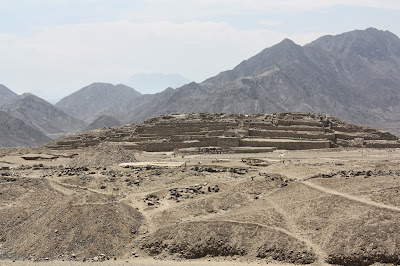Possible Sites
La Cintinela 200
miles from Lima
11 Well
defined pyramids
Highly
centralized
La Centinela was the Incan capital of the kingdom of the
Chinca. It is "an unusual site in that it is one of the very few places
where the Incas incorporated a major state installation into a preexisting, and
still functioning, non-Inca capital."
Isla de sol/luna
Lake
Titicaca, Puno. Maybe Bolivia
Huancane, Hatun Quolla
-over 80
Ruins on island
- Sun god
was born here
Cusco – capital
of the incan empire
Machu
Picchu, Wayna Picchu, Saqsawaman, Ollataytambo
Pachacamac –
religious centre, hour or two outside LIma
Originally
Ichma then Incans came and preserved it as a religious centre.
17 pyramids
still standing, 5 pyrimids and sun shrine were from Incan period.
Caral
Not
directly inca related
Evidence
of quipu – counting system
Research Project (Final)
Research
and discover connections at different sites for Colonial Period and Post
Colonial Architecture and Art. I should be aware of living traditions as they
are practiced. Create a final project that illustrates where and if the Incan
culture is still relevant and present in modern Peru.
Books
1.
Incas and Their Ancestors The Archaeology of
Peru – Michael Moseley (Thames and Hudson)
2.
Andean Archaeology - Helaine Silverman
3.
The Art & Architecture of the Incas – David
M Jones
4.
Domination without Dominance – Inca – Spanish
Encounters in early Colonial Peru -
Gonzalo Lamana
“offers an alternative narrative of the conquest
of the Incas that both examines and shifts away from the colonial imprint that
still permeates most accounts of that confrontation. “
5.
History’s Peru: The poetics of Colonial and
Postcolonial Historiography – Mark Thurner



























